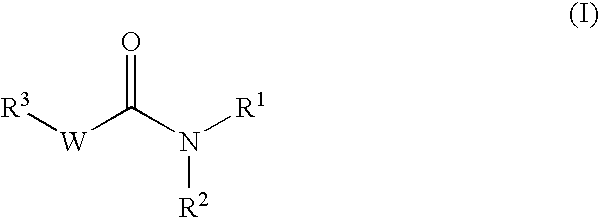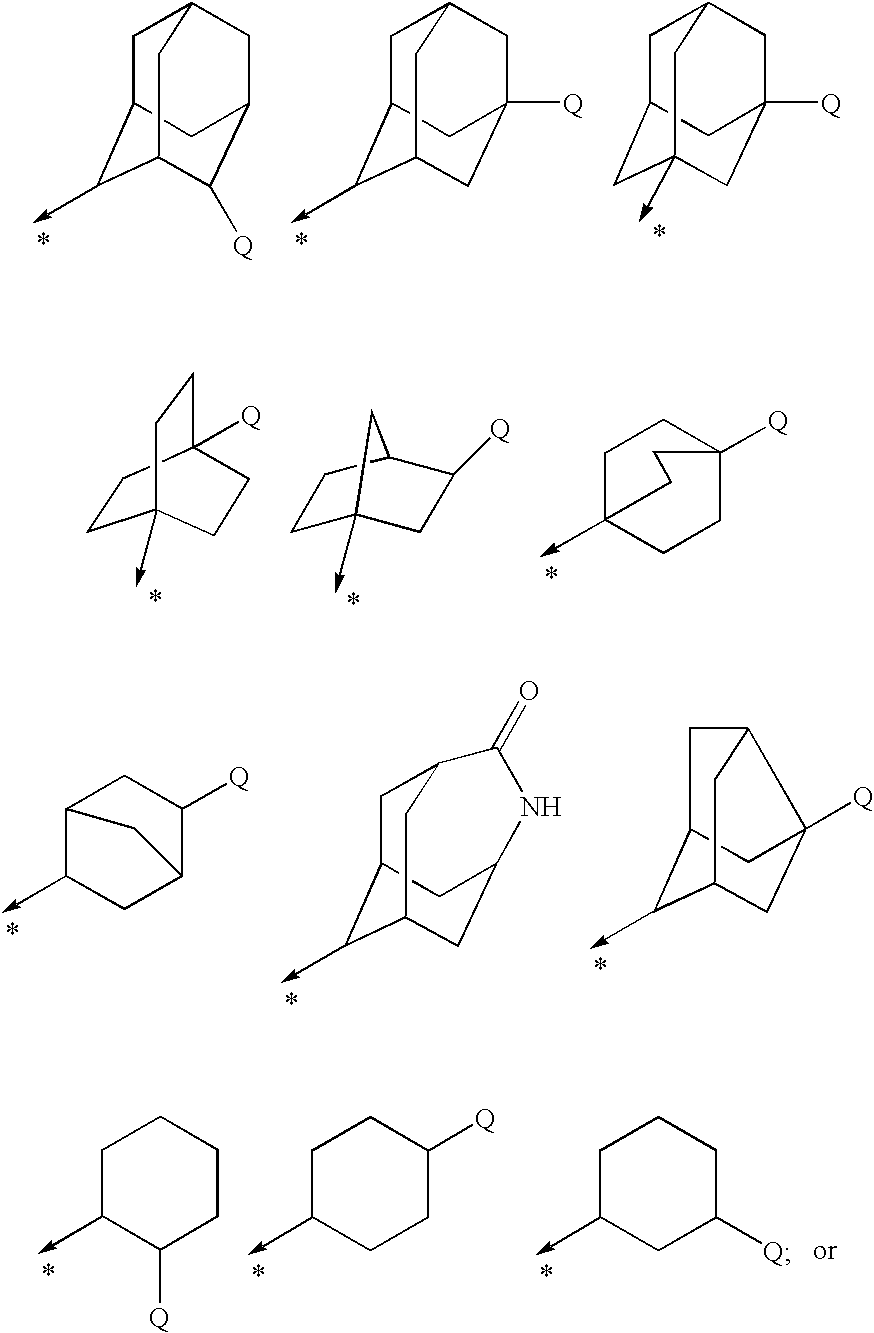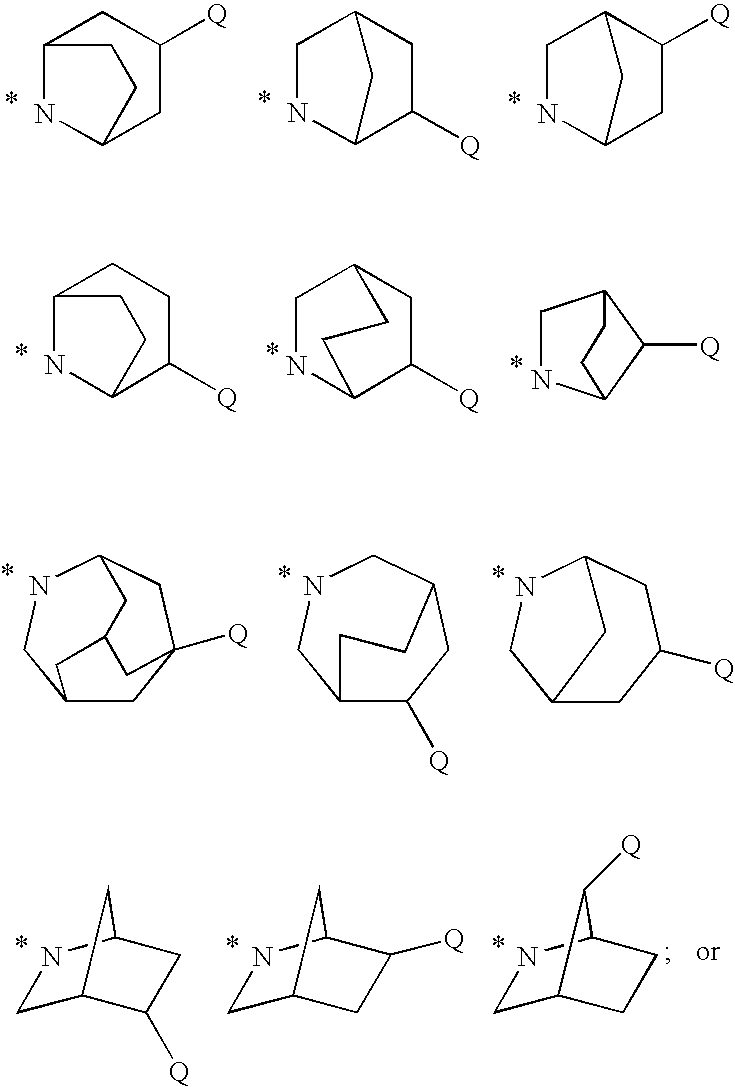Pharmaceutical use of substituted amides
a technology of amides and amides, which is applied in the field of pharmaceutical use of substituted amides, can solve the problems of increasing the mortality of cardiovascular diseases, major global health problems of metabolic syndrome, etc., and achieves the effects of reducing the level of active intracellular glucocorticoid, impaired glucose tolerance, and reducing intracellular concentrations of active glucocorticoid
- Summary
- Abstract
- Description
- Claims
- Application Information
AI Technical Summary
Problems solved by technology
Method used
Image
Examples
example 1-1
General Procedure (A)
4-(2,4-Dichloro-phenoxy)-N-((1R,3S,5R,7S)-3-hydroxy-adamantan-1-yl)-butyramide
[0447]
[0448]To a stirred solution of 4-(2,4-dichloro-phenoxy)-butyric acid (0.8 g, 3.21 mmol) in dry THF (25 mL) was added HOBt (0.48 mg, 3.533 mmol) and EDAC (0.68 g, 3.533 mmol). After stirring for 10 min. at room temperature, DIPEA (0.62 mL) and 3-amino-adamantan-1-ol (0.59 g, 3.533 mmol) were added and the resulting mixture was stirred for 16 hrs. at room temperature. The volatiles were removed in vacuo and to the residue was added water (25 mL) followed by extraction with EtOAc (3×35 mL). The combined organic phases were washed with brine, dried (Na2SO4), filtered and the solvent evaporated in vacuo. The oily residue was crystallised from diethyl ether (5 mL) affording after drying at 50° C. in vacuo 800 mg (62%) of the title compound as a solid.
[0449]1H NMR (400 MHz, DMSO-d6) δ 1.35-1.58 (m, 6H), 1.70-1.85 (m, 6H), 1.91 (q, 2H) 2.09 (br.s., 2H), 2.21 (t, 2H), 4.04 (t, 2H), 4.48 (...
example 2-1
4-(2,4-Dichloro-phenoxy)-N-(5-hydroxy-adamantan-2-yl)-2,2-dimethyl-butyramide
[0451]
[0452]To a stirred solution of 4-(2,4-dichloro-phenoxy)-2,2-dimethyl-butyric acid (250 g, 0.902 mmol, prepared in a similar way as described in J. Am. Chem. Soc. 89, 2500-1 (1967)) in dry DMF (3 mL) was added HOBt (180 mg, 1.173 mmol) and EDAC (225 mg, 1.173 mmol). After stirring for 1 hr at room temperature, DIPEA (306 μL) and 4-amino-adamantan-1-ol (181 mg, 1.082 mmol) were added and the resulting mixture was stirred for 16 hrs. at room temperature. The volatiles were removed in vacuo and the residue was purified using prep. HPLC / MS affording 153 mg (40%) of the title compound as a solid. 1H NMR (400 MHz, CDCl3) □ 1.34 (s, 6H), 1.52 (q, 4H), 1.69-1.79 (m, 4H), 1.87 (d, 2H), 2.02-2.16 (m, 5H), 2.57 (br.s., 1H), 3.95-4.02 (m, 1H), 4.05 (t, 2H), 6.02 (d, 1H), 6.83 (d, 1H), 7.17 (dd, 1H), 7.35 (d, 1H).
[0453]m / z: 426.6 [M+1]+
The following compounds were made in a similar way as described in example 2-1.
[...
example 3-1
2-(2,4-Dichloro-phenoxy-methanesulfonyl)-N-(5-hydroxy-adamantan-2-yl)-N-methylacetamide
[0455]
[0456]To a solution of 2,4-dichloro-phenol (10 g, 61.35 mmol) in dry DMF (100 mL) was added NaH (2.06 g, 85.89 mmol, 60% in mineral oil). The mixture was stirred for 30 min. at room temperature followed by dropwise addition of chloro-methylsulfanyl-methane (5.65 mL, 67.48 mmol) and stirring was continued for 16 hrs at ambient temperature. The reaction was quenched by addition of water (150 mL) and extracted with diethyl ether (2×100 mL). The combined organic phases were washed with saturated aq. ammonium chloride (2×100 mL), dried (Na2SO4), filtered and evaporated in vacuo afforded 17 g crude 2,4-dichloro-1-methylsulfanylmethoxy-benzene which was used without further purification in the next step.
[0457]To an ice cooled solution of the above crude 2,4-dichloro-1-methylsulfanylmethoxy-benzene (17 g) in DCM (200 mL) was added portion wise m-CPBA (13.8 g, 79.75 mmol) during 30 min. The resulting...
PUM
| Property | Measurement | Unit |
|---|---|---|
| flow rate | aaaaa | aaaaa |
| insulin resistance | aaaaa | aaaaa |
| concentrations | aaaaa | aaaaa |
Abstract
Description
Claims
Application Information
 Login to View More
Login to View More - R&D
- Intellectual Property
- Life Sciences
- Materials
- Tech Scout
- Unparalleled Data Quality
- Higher Quality Content
- 60% Fewer Hallucinations
Browse by: Latest US Patents, China's latest patents, Technical Efficacy Thesaurus, Application Domain, Technology Topic, Popular Technical Reports.
© 2025 PatSnap. All rights reserved.Legal|Privacy policy|Modern Slavery Act Transparency Statement|Sitemap|About US| Contact US: help@patsnap.com



